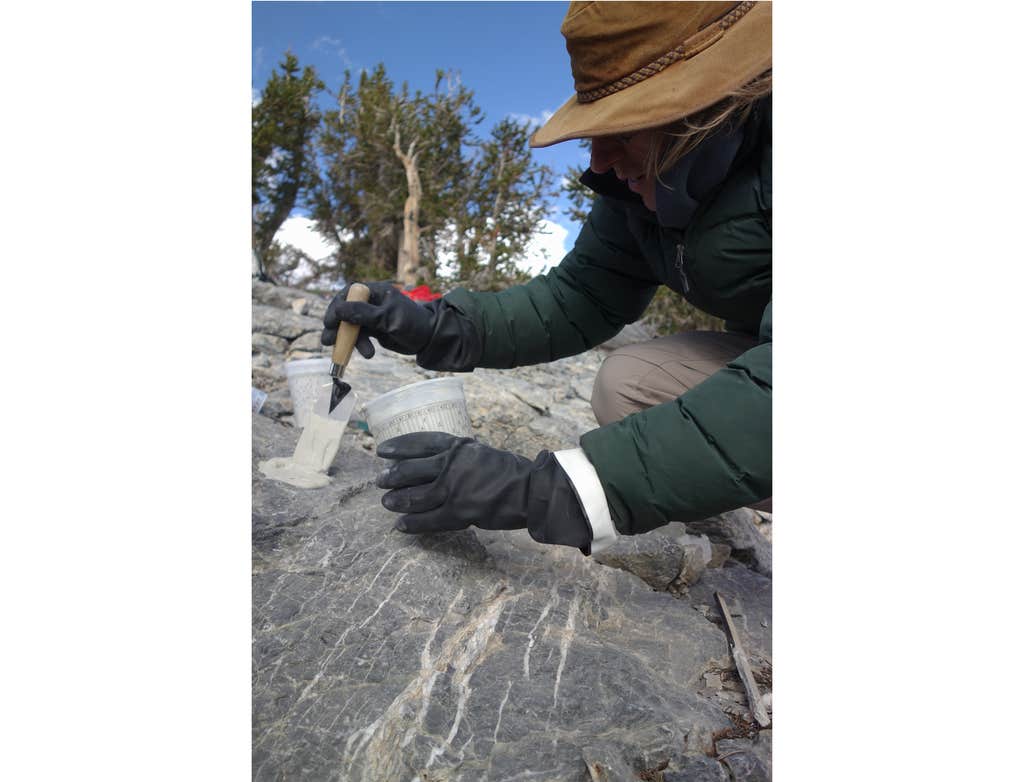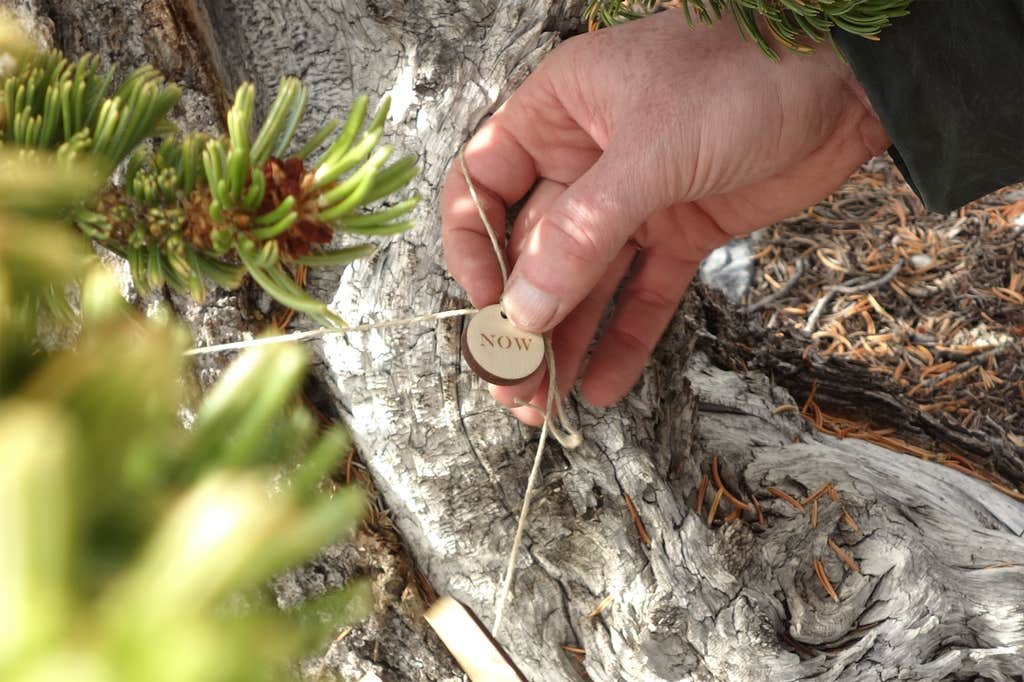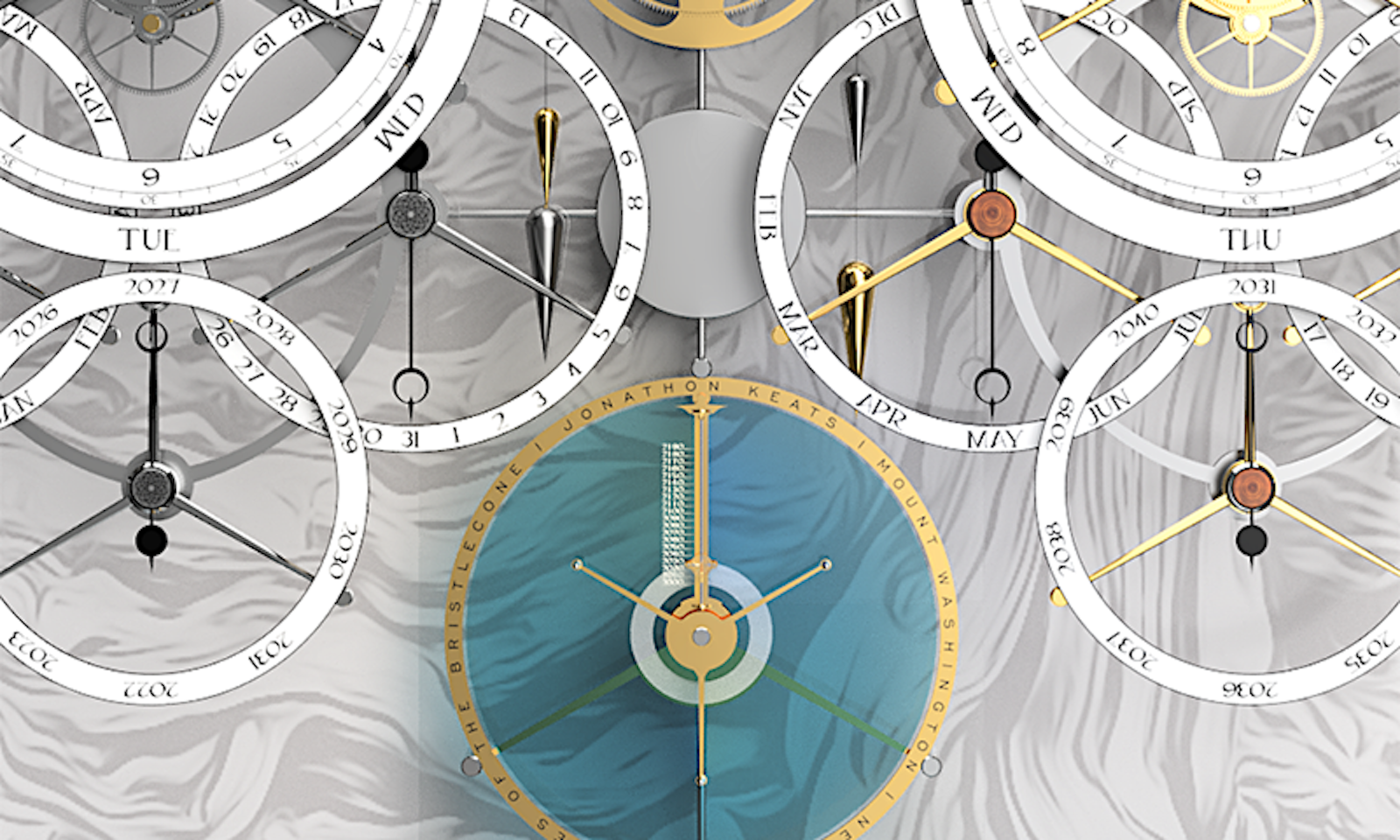In the fall of 2020, I installed a municipal clock in Anchorage, Alaska. Although my clock was digital, it soon deviated from other timekeeping devices. Within a matter of days, the clock was hours ahead of the smartphones in people’s pockets. People figured something was awry.
But the clock wasn’t defective. It was just unconventionally regulated: I calibrated the flow of time to coincide with the flow of glacial rivers. Impacted by climate change, the rivers were flowing faster than in the past. Or from the perspective of the rivers, everything else was happening more slowly.
As I wrote in a previous Nautilus article, “Philosophy Is a Public Service,” my training is in philosophy, which I practice in public. My ambition is to engage as broad a population as possible in the realm of ideas, encouraging people to explore the world in which we live, and to chart possible futures for our cities, our environment, and our planet. I believe that collective reflection and anticipation are necessary for our survival—especially in this period of ecological upheaval—and that philosophy needs to be a public service as much as cartography and timekeeping.

I created Alaska River Time while I was a visiting artist at the Anchorage Museum. I developed this art installation out of the conviction that all the clocks I’d ever encountered were malfunctioning. I’m not claiming they’re imprecise. The oscillations of atomic clocks at the National Institute of Standards and Technology are so consistent that they will neither gain nor lose a second over billions of years. Even Big Ben, constructed in the 1850s, has such a steady beat that minor adjustments are required only once a week.
What is troubling to me is their accuracy, or in other words the degree to which the steadiness of clocks corresponds to time as actually experienced by people and other living beings. Time seldom keeps a steady beat in nature. Circadian rhythms fluctuate, as do rates of growth and decay.

Given that life on a river is synchronized by the fluctuating discharge of water, flow rate has greater salience than the split-second pulsations of a strontium atom, or even the planetary rotation that organizes our days in 24-hour cycles. When we look at a river from the perspective of the clock on our smartphones, we perceive natural deviations as imperfections. We expect the Amazon to behave like Amazon.com. We expect nature to run on time to meet the demands of an economy that considers unpredictable conditions to be a logistical problem.
Our temporal intolerance is intolerable from the standpoint of planetary well-being. Climate change shows that nature cannot be pushed around indefinitely. Logistics must be accountable to more than market demands. Similarly, for a clock to be accurate, I believe that it must be sensitive to environmental variations. From the perspective of NIST, it must be imprecise.
Horology, the practice of time measurement, is a conservative trade, motivated by the age-old desire to bring order to the world. Clocks promise that life will have the certainty of astronomy or physics by gearing living systems to operate like machines.
Ironically, even bringing that certainty to a tabletop mechanism proved terribly difficult, confounding inventors for thousands of years. Driven by spilling water, clocks slowed down as they lost ballast. Driven by falling weights, clocks sped up as the mass accelerated. Discovered by Galileo, who observed the periodic motion of a swinging chandelier in church one day, the pendulum provided the first scientific solution.
In theory, the rate at which a pendulum swings is determined by its length from pivot to bob. In ideal conditions, the pendulum would oscillate at that rate indefinitely. From the moment that Christiaan Huygens operationalized Galileo’s observation in the first functional pendulum escapement until electronics supplanted mechanics, engineers worked to approach that ideal by making the periodic motion of timekeeping mechanisms more robust and reliable.
The greatest attention was devoted to isolating the pendulum from all external conditions. New alloys were formulated to expand and contract as little as possible with changes in temperature, so that the pendulum length always remained the same. The clock case was designed to isolate the pendulum from changes in humidity and air currents. With extraordinary ingenuity, clockmakers extracted the clock from the world, dematerializing the hours. Antique timepieces are some of the most luxurious objects ever created, yet paradoxically all the guilloché and gilding was directed toward transforming time into an abstraction.

There is an older tradition that stands in stark contrast to horology. The origins are prehistoric, and the practices were still prevalent at the dawn of the Common Era. I find one of the most vivid descriptions in Pliny’s Natural History, the foremost encyclopedia of the Roman Empire. “‘I have given you plants that mark the hours, and in order that you may not even have to avert your eyes from the Earth to look at the sun,’” Pliny wrote, assuming the voice of nature:
“Why then do you still look higher and scan the heavens themselves? Lo! you have Pleiads at your very feet.” Glow-worms do not make their appearance on fixed days or last a definite period, but certain it is that they are the offspring of this particular constellation. Consequently anybody who does his summer sowing before they appear “will have himself to thank for labour wasted.”
In Pliny’s account, time is relational. Natural phenomena are correlated in predictable ways, either because they are causally linked or because they’re triggered by similar environmental conditions. Timekeeping is a way of anticipating phenomena that are important based on those that are prevalent.
In modern scientific terms, glow-worms are phenological indicators, meaning that they signal seasonal changes in the environment as a whole. I should emphasize that they’re hardly unique in that respect. From North America to Asia, indigenous peoples still rely on ecological calendars that name the months based on the natural events underlying traditional lifeways.
For the Haida people of British Columbia, the time of year corresponding to January/February is known as hlgidguun kongaas, or “Canada goose moon,” referencing the geese flying down the coast. February/March is taan kongaas, or “black bear moon,” marking the time when bears emerge from hibernation. The calendar indicates that bears will emerge after the geese arrive, while allowing this progression of events to drift forward or backward relative to the lunar cycle based on natural variability in climate conditions from one year to the next.

Another important feature of ecological calendars can be witnessed in wiid gyaas, the Haida month that typically aligns with April. Coinciding with the end of winter, wiid gyaas references the Swainson’s thrush, which is known as the salmonberry bird in the Haida language. The song of this bird is not only the sound of springtime, but also calls upon people to forage for salmonberries, which might go unnoticed were it not for this creature’s persistent beckoning.
The tight coupling of the Haida calendar with the ecology of British Columbia is a testament to the more than 14,000 years they’ve lived there, during which time they’ve synchronized their lifeways with the lives of every other being. But the past reliability has become a source of vulnerability as anthropogenic climate change plunges April into February. What I’m saying is that the ecological calendar has inadvertently become an environmental indicator of global warming.
Ecologists and climate scientists are now collaborating with indigenous communities to revitalize ancient calendars by identifying current phenological correlations. For example, in the Pamir Mountains of Central Asia, farmers and herders have traditionally kept time by associating phenological indicators with parts of their body, counting from their toes to their head as winter leads into spring. Their bodies still provide convenient mnemonics, but they must now convene each year to reassess what counts and what it means. With this feedback, the calendar is self-correcting, but age-old rhythms have been supplanted by anxious contingency.
The time indicated by my fluvial clock is equivalently contingent, but the clock is intended to operate in a different context and with a different purpose. Instead of resetting the time periodically and using the discrepancy to recalibrate events such as the beginning of fishing season, I let the clock run free.
As I write these words, Alaska River Time is 3:14 AM on Nov. 30, 2024, nearly 10 months ahead of the Gregorian calendar. The fluvial calendar is ahead because Alaskan glaciers are melting more rapidly than in the past, and the speed of melting accelerates with every passing year.
The clock rate is a ratio between present conditions and the average flow over the last half century. When Alaska River Time is accessed online, you experience temporality from the rivers’ perspective. When you live on river time, your clock is no longer insulated from the environment. Your schedule is set in relation to fluvial conditions.
Rivers are not the only meaningful indicators of environmental conditions. Just as the time told by every river is inherently accurate even though the clock rate of two rivers may differ, all other life forms and living systems manifest time, and I believe that each has claim to equal authority.
At present I’m developing a clock that will be regulated by the growth of trees. The monumental electromechanical clock will be built at the Nevada Museum of Art in Reno.
There will be two faces and two pendulums. One will take orders from NIST in Boulder, Colorado. The other will be controlled by the growth of bristlecone pines on Mt. Washington in Nevada’s Great Basin.
A collaboration with the Long Now Foundation, which owns the property where the trees grow, the timepiece will not only juxtapose time standards but will also mesh phenology and horology. All trees grow erratically, at least from a precisionist point of view. This can be seen in their growth rings, which vary in thickness from year to year, impacted by factors ranging from rainfall to the quantity of carbon dioxide in the air. Dendrochronologists use this variation to detect climate conditions in the past, treating trees as passive records. My clock puts the trees in an active position, directing their own observations of the environment forward in time. How thick is this year’s ring compared to those in the past? The ratio sets the clock rate.

The traditional design of my clock is intended to be timeless. Given that bristlecones can live for as long as 5,000 years, and new fashions tend to peak in hours, the timelessness might be seen as an attempt to futureproof the device. However, my motivation is more philosophical than aesthetic, or rather the aesthetic properties are essential to its operation as a philosophical instrument.
By taking up the vernacular of a pendulum clock, and even integrating decorative arts such as guillauché, this new municipal timepiece meets Christiaan Huygens and Big Ben on their own terms. It questions the clockwork logic that has driven society since precision became a precondition for accuracy.
In Technics and Civilization, the historian Lewis Mumford observed that the “essential nature” of the clock “dissociated time from human events and helped create the belief in an independent world of mathematically measurable sequences.” On this basis, he set the clock above the steam engine as “the key machine of the modern industrial age.”
Mumford wrote these words in 1934, decades before climate change was detected and steam power was identified as a culprit. The key question of our own time is whether we can counter the environmental devastation wrought by the industrial age and fossil fuels.
I think that Mumford was right. But I also believe that clocks might just be the machinery needed to set a post-industrial age in motion, if only they can be made compatible with life on Earth. Like Alaska River Time, clocks can redeem horology by subverting it. ![]()
Lead art: Philip Abernethy / Courtesy of the Nevada Museum of Art
































